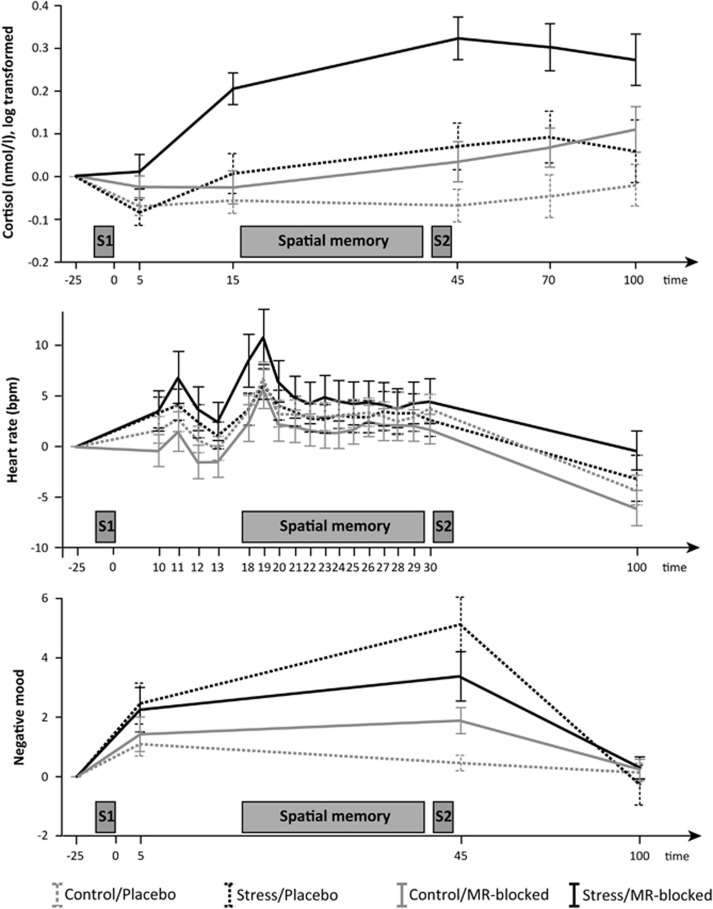Figure 2.
Cortisol levels (top), heart rate (middle), and negative mood (bottom) over the course of the experiment. Participants were randomly assigned to one of four groups: control/placebo (gray dotted lines), stress/placebo (black dotted), control/MR-blocked (grey solid), stress/MR-blocked (black solid). After pill ingestion and habituation to the laboratory environment, participants were brought to the MRI room and underwent either the socially evaluated cold pressure test (S1) or a non-stressful control procedure. After another task probing emotional face processing (Vogel et al, 2015b), participants performed the spatial memory task. Stress-related increases in negative mood, cortisol, and, at trend level, heart rate displayed successful stress induction in both drug groups. Time is indicated in minutes after stress induction/control procedure, all measurements are baseline corrected to the last measurement during habituation (−25 min). Mean values are depicted, error bars represent 1 SEM; bpm, beats per minute; MR, mineralocorticoid receptor; S1, first stress induction/control procedure (socially evaluated cold pressure task); S2, second stress induction/control procedure (mental arithmetic test) to maintain stress levels for a subsequent task.

